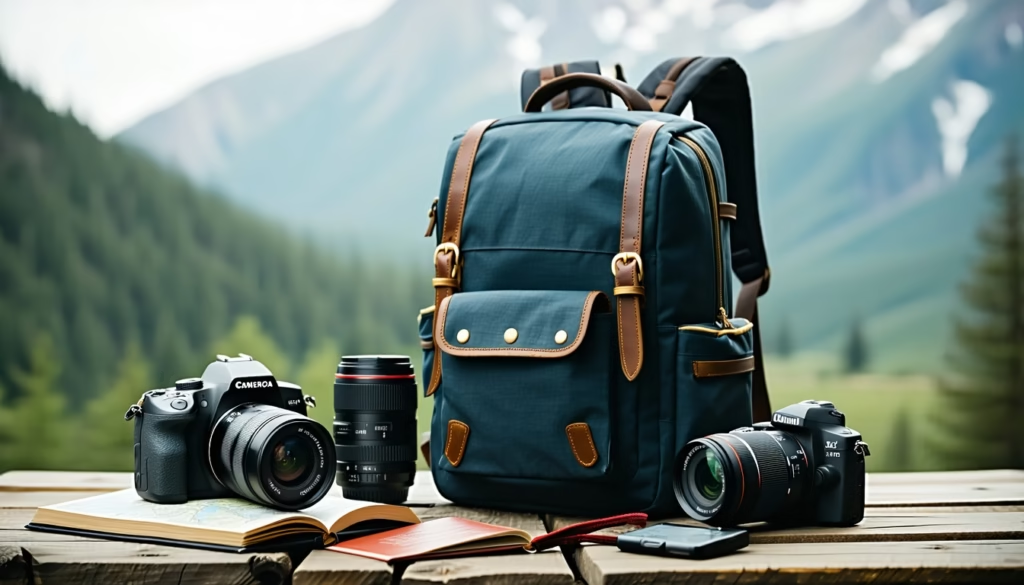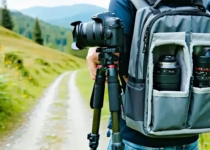How To Choose The Right Camera Backpack For Travel

If you’ve ever wondered how to choose the right camera backpack for travel, you’re in the right place. Packing camera gear for a trip can feel like solving a jigsaw puzzle—too many pieces and not enough room. By the end of this guide, you’ll know exactly what specs and features to look for, so your gear stays safe, organized, and ready to shoot.
Assess Travel Needs
Define Your Gear
Start by listing every piece of equipment you plan to carry. Do you shoot with a DSLR or mirrorless setup? Will you pack extra lenses, a flash, or a drone? Here’s a quick checklist:
- Camera bodies (DSLR or mirrorless)
- Lenses (wide, telephoto, primes)
- External flash, filters, microphones
- Batteries, chargers, memory cards
- Optional gear like a drone or gimbal
Plan Trip Duration
Are you headed out for a weekend city break or a month-long safari? The length of your trip will affect how much backup gear you need. For short trips, aim to travel light—pack your go-to lens and a versatile zoom. Longer adventures call for extra lenses and maybe a small tripod.
Evaluate Pack Size
Camera Capacity
Backpack capacity is usually measured in liters, but think in terms of gear count. A 20–25 L pack often holds:
- 1–2 camera bodies
- 3–4 lenses
- A flash or small gimbal
If you need more room, look at 30 L or bigger models.
Laptop And Accessories
Do you edit photos on the go? Choose a bag with a padded laptop sleeve. You can also find camera backpacks with laptop compartments you can buy that snugly fit most 13–15 in notebooks, plus room for a tablet or hard drive.
Tripod Carrying
Want quick tripod access? Look for side straps or a dedicated pouch. Some models let you sling your tripod under the pack for a low-profile fit. For step-by-step tips, check out how to carry a tripod using a camera backpack.
Inspect Protection Features
Padding And Dividers
Gear deserves a soft landing. Adjustable foam dividers let you tailor compartments to your bodies and lenses. Thick padding on the back panel and sides cushions against bumps.
Weather Resistance
Rain, dust, and sand don’t mix well with electronics. Choose a backpack made from water-resistant nylon or polyester, and consider one with a built-in rain cover. For more on choosing water-proof options, see what to look for in a waterproof camera backpack.
Check Comfort And Fit
Strap And Harness Design
Carrying a loaded bag all day can wear you down. Look for:
- Wide, padded shoulder straps
- Adjustable sternum strap
- Breathable back panel
These features help keep the pack stable and your shoulders happy.
Weight Distribution
Here’s the thing, packing heavy gear high on your back can throw you off balance. A good hip belt shifts weight onto your pelvis, and a well-ventilated back panel prevents sweaty days. To avoid soreness, read how to prevent back pain when carrying camera gear.
Consider Access And Organization
Entry Styles
How do you want to reach your gear? Common entry styles include:
- Top-load: quick but limited access
- Clamshell: full opening, great for packing
- Side access: grab your camera on the move
Think about whether you’ll be shooting on the go or unpacking at a base camp.
Internal Pockets And Dividers
Small pockets dedicated to memory cards, batteries, and filters keep things from bouncing around. Some packs even feature removable pouches you can grab without taking off the whole bag. For pro tips, check best ways to organize lenses inside a camera backpack.
Explore Additional Features
Anti-Theft Measures
Traveling through crowded areas? Look for lockable zippers, hidden pockets, or cut-resistant straps to keep your kit secure.
Modular Inserts
Want to customize on the fly? Some brands sell extra dividers and pouches so you can reconfigure your bag for different trips. Learn more in how to customize a camera backpack with inserts.
Compare Carry-On Options
Most U.S. airlines allow carry-on bags up to 22 x 14 x 9 inches. If you plan to gate-check your pack, make sure it still protects your gear during handling. For specific packing tips, see how to travel with a camera backpack on a plane.
Set Your Budget
Camera backpacks range from budget-friendly to pro-grade. Here’s a simple breakdown:
- Under $100: basic padding and minimal features. Check top affordable camera backpacks under $100.
- $100–$200: better materials, waterproof coating, laptop sleeve.
- $200+: rugged construction, advanced harness systems, modular design.
Test Before Buying
Like trying on a pair of shoes, you need to test your backpack loaded with your actual gear. Adjust straps, bend over, squat—does it stay snug? Can you reach your camera without taking it off?
Frequently Asked Questions:
How Much Gear Can a Typical Travel Camera Backpack Hold?
Most 20–25 L backpacks fit 1–2 camera bodies and 3–4 lenses, plus small accessories.
Do I Need a Waterproof Camera Backpack?
If you shoot outdoors or travel in rainy climates, water resistance is a must. A rain cover adds extra protection.
Can I Carry a Tripod Inside My Camera Backpack?
Yes, many packs include side straps or bottom holders for tripods. For detailed advice, see how to carry a tripod using a camera backpack.
How Do I Prevent Back Pain with a Camera Backpack?
Choose a pack with a hip belt and padded shoulder straps. Keep heavy items close to your back for better balance.
Is It Safe to Pack a Laptop in a Camera Backpack?
Most packs with dedicated laptop compartments have extra padding. Make sure the sleeve fits snugly and locks in place.
How Do I Clean a Camera Backpack?
Empty all compartments, brush off dirt, spot-clean with mild soap and water, then air dry. For full steps, check how to clean and maintain a camera backpack.
What’s the Difference Between Hiking and Camera Backpacks?
Camera backpacks focus on gear protection and access, while hiking packs prioritize weight distribution and hydration. For a deeper dive, see the difference between hiking and camera backpacks.
Key Takeaways And Next Steps
Choosing the right travel camera backpack comes down to assessing your gear list, picking the right size, and checking for protection, comfort, and smart features. Don’t forget to test it loaded and consider your carry-on needs before you hit the road.
Now it’s over to you—grab your favorite camera and pack it confidently. Have a go-to backpack tip or model you love? Share your thoughts in the comments below!


